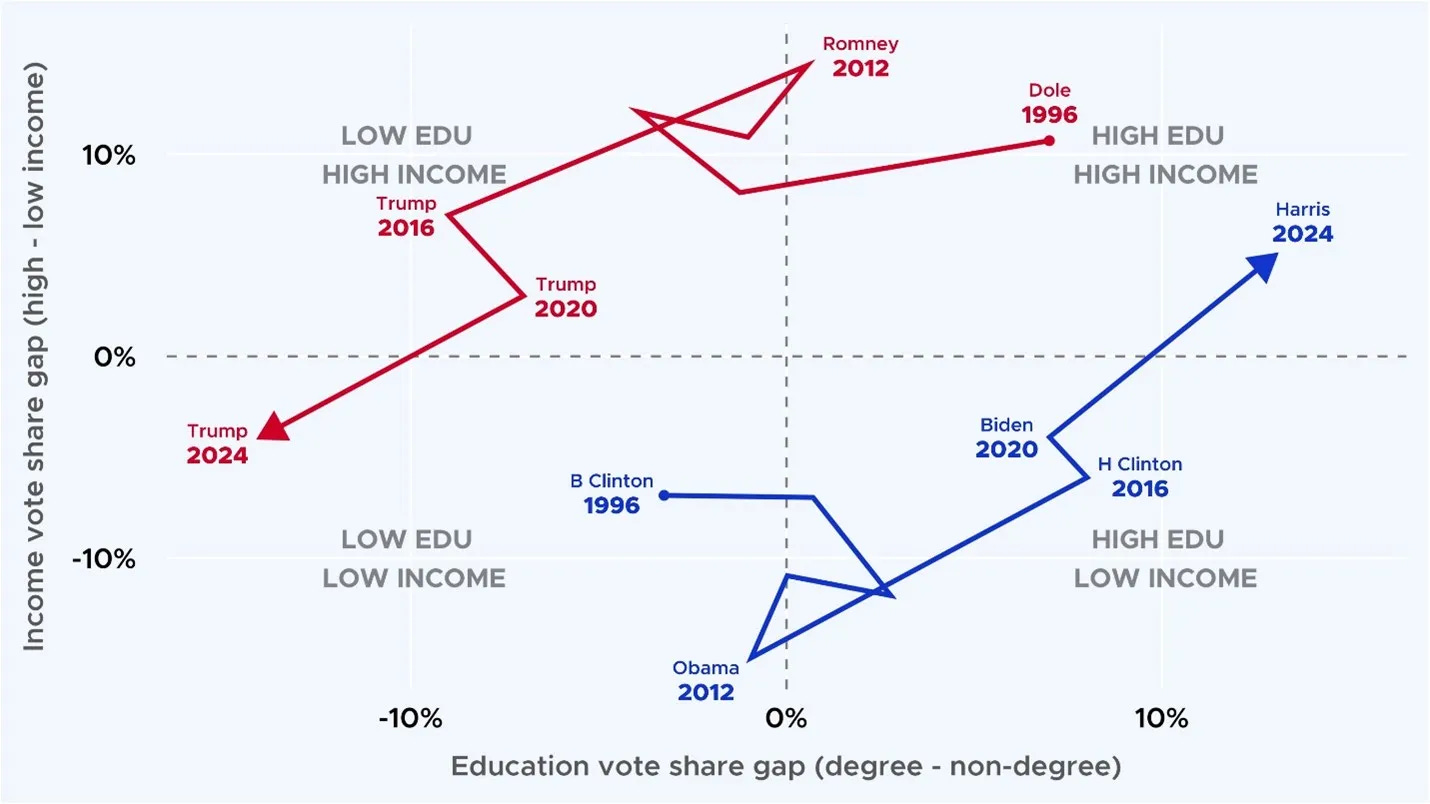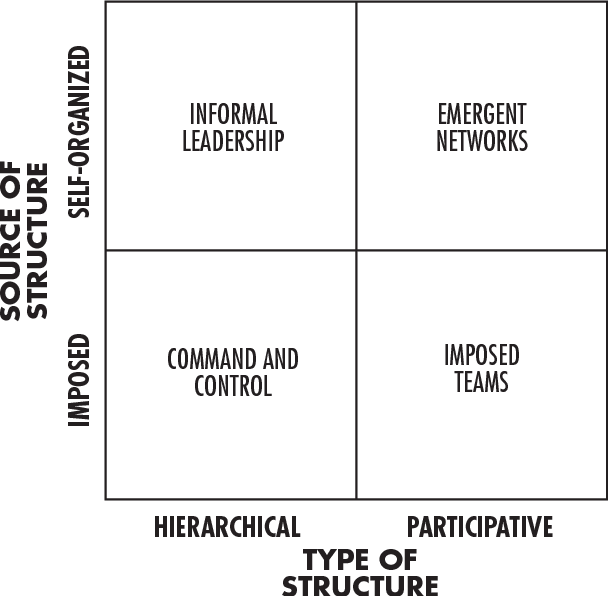Moral Constraints
Bayint Magyar | Bluesky | Factoids | Elsewhere, Elsewhen | A Follow-Up on Confirmation Bias
Liberal democracy offers moral constraints without problem-solving. Populism offers problem-solving without moral constraints.
| Bayint Magyar
Bluesky
I have joined the mass migration from Twitter/X to Bluesky. You can follow me there: @stoweboyd.bsky.social.
Why did I move, and why now?
Elon Musk has turned what was once a dynamic and useful social community into a ravaged wilderness. I have an image of Saruman, the evil wizard from the Lord of the Rings, tearing down the trees and digging vast manufacturing pits surrounding his tower at Isengard.
I had managed to avoid a lot of the worst of his strip mining by creating a list, ‘core following’, into which I added those specific users that I would read daily, which avoided most of the algorithmic mess. But recent changes in the terms of service would make users participants in scraping content for Grok:
A new terms of service document, which took effect on Nov. 15, allows Musk to use tweets, photos and videos — even from private accounts — to train Grok, the platform’s AI bot.
“You agree that this license includes the right for us to (i) analyze text and other information you provide … for use with and training of our machine learning and artificial intelligence models, whether generative or another type,” the terms say under the section about users’ rights.
They also stipulate that users’ content may be modified or adapted for other media.
Users will not be paid for their content, which could end up in the hands of other companies, organizations or individuals.
So, I have breathed new life in my Bluesky account, and I am using it daily. There is an app that I will be trying sometime this week to port all my tweets into Bluesky, where they will be transformed into skeets, and appropriately back dated.
The migration is likely to continue to accelerate. Bluesky is adding millions of new users:
Musk’s ownership of X and his updates to content moderation on the platform have been pushing brands and media groups closer and closer to the exit. This week, The Guardian media group announced that it will stop posting on X, describing the site as a “toxic media platform.” On Nov. 4, the Berlin Film Festival became the latest European fest to exit the social media platform. NPR stopped using X in April 2023, and luxury fashion house Balenciaga completely deleted its account way back in November 2022.
These are the brands that X would presumably like to have advertise on the platform. But instead, a wholesale retreat.
Paul Krugman wrote today about this ‘Xodus’ of X:
I won’t go through the litany of ways the platform has changed for the worse under Musk’s leadership, but from my point of view it has become basically unusable, overrun by bots, trolls, cranks and extremists.
But where could you go instead? In the past couple of years, there have been several attempts to promote alternatives to X, but none of them really caught on. To some extent this may have reflected flaws in their designs, but a lot of it was simply lack of critical mass: Not enough of the people you wanted to interact with could be found on the alternative sites.
Then came this year’s presidential election, which seems to have sparked an exodus (“Xodus”?) from Muskland. From my point of view, Bluesky, in particular — a site that functions a lot like pre-Musk Twitter — quite suddenly has reached critical mass, in the sense that most of the people I want to hear from are now posting there. The raw number of users is still far smaller than X’s, but as far as I can tell, Bluesky is now the place to find smart, useful analysis.
I don’t want to use Threads, which is just-another-social-media app under the control of Meta.
And the Bluesky community is welcoming, and evolving rapidly, with a wide variety of clients.
You might want to give it a look. If you’re there already, follow @stoweboyd.bsky.social.
Factoids
Stairs are dangerous.
From 1990 through 2012, an average of 1.1 million people per year were treated in emergency departments for stair-related injuries.
| The American Journal of Emergency Medicine
…
Sustainability on the half-shell.
Aquaculture of oysters, clams and other bivalves has doubled over the last two decades, pushing out more destructive fishing methods. Around 90 percent of bivalves are now farmed.
This is cause for celebration, Dr. Golden said. “If you look at a global scale,” he said, Shellfish are the most sustainably produced type of seafood.
…
82%?
This robust study [The 2024 Mercer Global Talent Trend Report] of more than 12,000 global participants suggests that 82% of the workforce is at risk of burnout, citing excessive workload, exhaustion, and financial strain as the main culprits.
| Jennifer Moss, who also cites Slack’s Workforce Index, which
analyzed more than 10,000 desk workers around the globe and found that “employees who feel obligated to work after hours register 20% lower productivity scores.” They also suffer from “2.1x worse work-related stress, 1.7x lower satisfaction with their overall working environment, and 2x greater burnout.”
So smart organizations will turn down the pressure, and come out better for it.
Elsewhere
The best analysis of the data to find the election’s real patterns (that I have seen) is that of sociologist Musa al-Gharbi,
I will share just one chart from this very, very long piece. This chart shows how the Dems and the GOP have essentially shifted their voters since 1996:
As I wrote recently, referring to this chart,
The stark reality, says al-Gharbi, is that the Dems have become the party of the well-educated, wealthy elite, and the GOP has become the party of the low education, low income working class.
It was the defection of non-White women and young people that led to Harris’s loss.
Elsewhen
In 2021, I spent some serious time on the concept of minimal viable work, including, Emergent Culture and Minimum Viable Management. Here’s some excerpts:
E. Jeffrey Goldstein, in Emergence as a Construct: History and Issues, reviewed the history of the concept of emergence, starting with Aristotle and continuing on to today’s complexity theory. He offers this as a working definition:
The arising of novel and coherent structures, patterns, and properties during the process of self-organization in complex systems.
With regards to organizations demonstrating emergence, Goldstein suggests we will see
radical novelty — new capabilities and behaviors can appear that were not formerly observed
coherence — organizations maintain themselves over time
wholeness — an organization can be viewed as a system greater than the sum of its parts, but still as a whole
ostentative — organizations ‘show’ themselves: they can be viewed and the interplay between the parts can be viewed, and changes in the organization over time is best viewed as a whole.
Most pertinently, Goldstein turns to make a clear distinction between the types and sources of structure in organizations:
First, we are only looking at organizational cultures where the source of structure is self-organized. Goldstein was interested in emergent leadership (synonymous with informal leadership in the chart), focused on ‘how leaders emerge in leaderless groups’, and citing complexity theorist Stuart Kauffman, he wonders if there is ‘a kind of “order for free”’ in such situations. Note, however, that hierarchical structure — perhaps transitory — is one aspect of such emergence.
It is the upper right quadrant that is perhaps of greatest interest to those interested in the intersection of self-organization and participative principles of organization, or as Goldstein puts it, ‘authentic instances of emergence in organizations as complex systems’, and offers up a great example:
An example of an emergent network that also includes emergent leadership can be found in Murnigan and Conlon’s (1991) research into the organizational success factors of string quartets in the UK. The organization of successful quartets was observed to be a function, not of the imposition of an official management structure, but instead of allowing for the emergence of effective strategies, work processes, and leadership roles. For instance, successful quartets exhibited the emergence of conflict resolution as they rehearsed, whereas unsuccessful quartets tried to resolve these conflicts through imposed rules and roles.
And later, I try to thread the needle between emergent culture and minimum viable management:
The single biggest takeaway, however, is a characteristic of emergent organizations: minimum viable management. As I wrote last fall,
We need a new work culture in which management is considered at most a necessary evil, and something we should have as little of as possible. We have learned something about alternatives to conventional management, and we should continue to experiment and observe new approaches. But we know some things to be true, such as lessons we have learned about the danger inherent in power imbalances, the pervasiveness of our cognitive biases, and the value and challenges of diversity.
Minimum viable management is a pillar of minimum viable work:
Minimum viable work means operating with the greatest degree of individual autonomy, the lowest degree of managerial overhead, and the highest levels of cooperation without coercion.
I suggest that we will find that emergent organizations will share these characteristics as the outgrowth of self-organization and participative principles, and a less-is-more approach to leadership, even when informal, transitory, and emergent.
A Follow-Up on Confirmation Bias
In two recent posts, Debiasing Strategic Decisions - Part 1 and Debiasing Strategic Decisions - Part 2, I made several points regarding confirmation bias, such as
We are pattern recognition machines: it is a defining characteristic of our species. But there are some side-effects of our pattern-matching prowess that skew our reasoning. For example, confirmation bias leads us to discount new information when it doesn’t support an initial hypothesis.
Once you become aware of this bias, you will see it cropping up everywhere. I encountered two recent examples just this week: One regarding medical doctors attempting to use chatbots for diagnosis, another about polls by Nate Silver.
Keep reading with a 7-day free trial
Subscribe to Work Futures to keep reading this post and get 7 days of free access to the full post archives.







